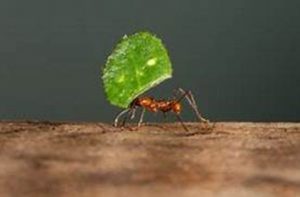By Debbie Roland, Emmy Ulmschneider, and Shirley Kelley
Master Gardeners
Insects are the cogs that keep our Earth’s machinery running. Have you ever thought about what our world would look like without insects? We often divide insect into two groups: beneficials and pests but, our well-being depends on the services that all insects provide and the web they weave with all life on Earth.
For a moment think about a world devoid of insects. Without insects, many of our crops would not be pollinated. Imagine the produce section of HEB without apples, avocados, almonds, cherries, pumpkins, strawberries, and tomatoes. Who could live without chocolate and what would cheese be without alfalfa to feed to cows? Imagine a diet of only wind pollinated crops such as rice, corn, barley, and oats. And it is not just humans that would be affected. Without a pollinator, a plant that birds depend on, or deer browse on will die out and in turn so will the organisms that depend upon that bird and deer. And eventually, the food web collapses.

Without insects, decomposition would not be as effective. Carcasses would not decompose as fast and the nutrients that nourish us would not be returned to the soils. Keeping our soils healthy and productive means keeping our food system intact as well as increasing water infiltration into the soils and sequestering carbon. Roughly one out of every four organisms is an insect. Insects form the basis of the food chains in any ecosystem.
When we think of insects, we tend to focus on butterflies, but insects are far more than butterflies. Texas is full of interesting insects from dung beetles to ants, from springtails to earwigs!
Perhaps you have heard of the famous parasol or leaf cutter ants that make gardens and raise their crops. These amazing creatures are called “Parasol” ants because they are often seen walking in processions, each one holding a piece of green leaf above its head. Sort of like umbrellas! These bits of green leaf are not for food but are taken to their nest and made into a compost soil. Hum, these ants are farmers. They deliberately sow, prune, fertilize, weed, harvest, and store a fungus crop as carefully as any gardener tends his vegetables. The fungus is its only source of food. The Texas Leaf Cutting ant, Atta texana, is found in south and east Texas. Here in the far west, drier parts of the state, we have our own desert leaf cutting ant, Acromyrmex versicolor. It too, lives in large colonies and collects live and dead vegetation which is used for their fungus gardens.
The next time you look around your yard, stop and observe. And when you see something new, think about all the unseen connections that bind you to the health and well-being of your yard and the life that lives there.
For more information, call the AgriLife office at 498-4071 in Odessa or at 686-4700 in Midland or visit aggie-horticulture.tamu.edu or westtexasgardening.org.




